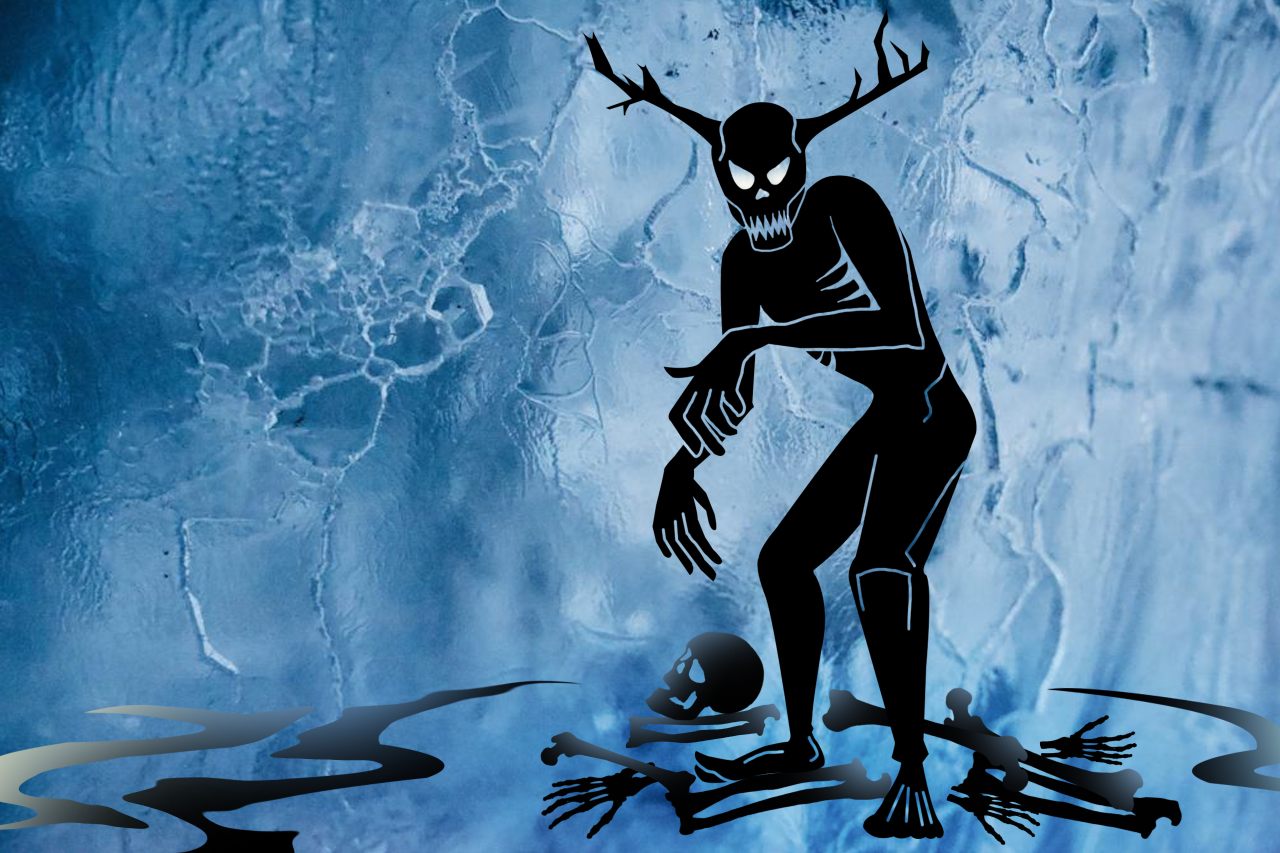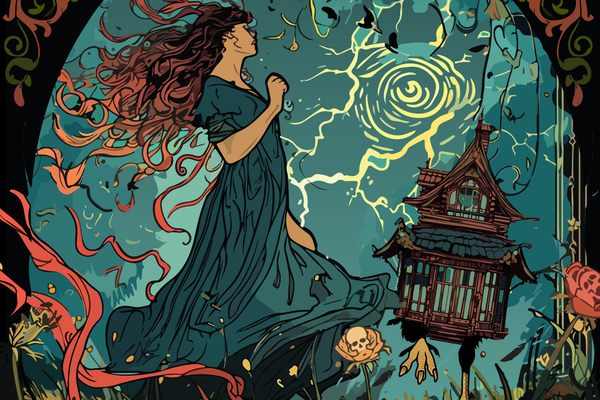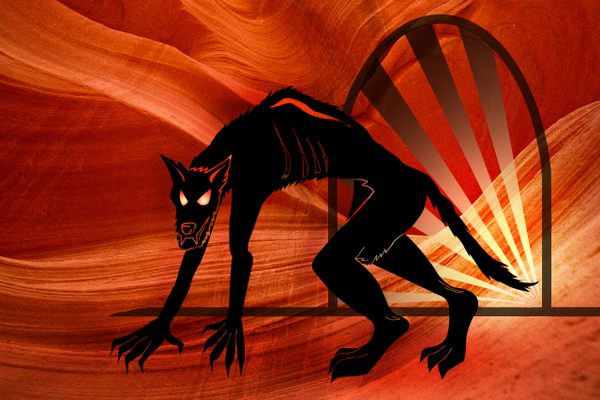The Wendigo and 6 Other Ancient Monsters From Indigenous Folklore
These ancient terrors, from Australia’s bunyip to Brazil’s capelobo, still haunt—and hunt—us.
They have survived in the shadows for millennia. Their names have been whispered over hearths and campfires, invoked as warnings to disobedient children, or perhaps known but never said aloud for fear of attracting their attention: the wendigo, the bunyip, the capelobo.
Around the world, Indigenous communities have passed rich storytelling traditions from one generation to the next from time immemorial. Many of the stories have been lost in the upheaval and destruction of the colonial era. Selfless heroes and bold tricksters alike have been forgotten, or faded to a mere wisp of collective memory. But the monsters, ah, the monsters. Ferocious, fanged, skulking, slithering, they seem to have endured better than most. These beings still haunt—and hunt—from Australia to Brazil, Lake Victoria to Lake Winnebago. Here are some of the most memorable ancient terrors from Indigenous lore that still send chills down our spines.
Beware the Wendigo, the Frostbitten Flesheater of North America’s Chilly Heartland
by J.W. Ocker
Few monsters from Indigenous folklore can boast of making it in Hollywood. There’s Krampus, a modern amalgamation of deeply ancient Central European traditions, and the wendigo, which first terrorized the Algonquin, Ojibwe, and other Anishinaabe peoples around the North American Great Lakes. We’ll leave it to you to decide whether the 2021 movie Antlers does justice to the wendigo’s ferocity, but we’re betting the wendigo doesn’t care. It’s too busy looking for its next victim. A potent symbol of human greed, the emaciated creature is insatiably hungry and appears in the lean and desperate season of winter. In the 19th century, some documented regional cases of cannibalism and other unspeakable acts were chalked up to individuals “going wendigo.”

The Blood-Sucking Capelobo Haunts Brazil’s Dense Forests
by April White
The Guajajara, Yudjá, and other Indigenous communities along the rivers of Brazil differ on what the capelobo looks like. Sometimes it’s described as a human-tapir hybrid, or an anteater that walks on two legs. Sometimes it has only one leg. What everyone does agree on, however, is that this brain-slurping, blood-sucking forest creature is relentless, and almost impossible to kill. If you hear its bone-chilling scream echoing through the trees, run or hide. Just don’t look back.
The Child-Eating Bunyip Still Haunts Australia’s Wetlands
by Sarah Durn
Sometimes feathered, sometimes scaly, sometimes covered in malodorous shaggy fur, the bunyip, which goes by many names, can be found across the continent. Its screams cause disease and its appetite for children is bottomless. This ancient terror of riverways and swamps may trace its origin story to Diprotodon, a massive, wombat-like animal that went extinct nearly 50,000 years ago. That may seem like a long time ago, but ancestors of today’s Aboriginal nations were already sharing tales over their hearths back then—and keeping watch for a black shadow moving in the water.

The Child-Eating Bloodsucker of Aboriginal Australian Nightmares
by April White
Australia definitely has its share of ancient monsters with a particular taste for tender, young flesh but, no taller than a child and essentially toothless, the potbellied yara ma tha who might not sound intimidating. Yet stray too close to a fig tree and the creature could swallow you whole—and then spit you back out, still alive but forever changed. Misconstrued as a vampire by European colonists, the yara ma tha who is actually an example of practical Indigenous knowledge distilled into a memorable tale: Real predators often hid among the dense foliage of fig trees, so it was best to keep your distance.
The Loch Ness Monster Look-Alike Lurking Beneath Lake Tahoe
by Suzie Dundas
It seems lake monsters are a dime a dozen—every self-respecting lake has to have one, from Lake Tele’s Mokèlé-mbèmbé in the Republic of the Congo to western New York’s Silver Lake sea serpent, which happens to live nowhere near a sea. Lake monster scholars (it’s a thing) have a theory that tales of these creatures speak to the human need to make sense of the unfamiliar and unknown—what lies beneath, in other words. Today, Tessie is a smiling, tourist-friendly ambassador for the Tahoe area, but its roots are far more unsettling. The Indigenous Washoe, or Wašiw, people of the region have long warned of water babies, malevolent spirits waiting in the depths of Lake Tahoe and other regional lakes.

The Man-Eating Dingonek Lurks Beneath East Africa’s Rivers
by April White
Sprawling across the borders of three countries, Lake Victoria, one of the African Great Lakes, is a principal source of the Nile River. And the smaller rivers flowing into the lake are sources for stories of the fearsome dingonek, perhaps the most poignant river monster of the colonial era. The “fish-beast” was described by British and American hunters and explorers as nearly 20 feet long, with clawed feet and tough scales and a dog-like head—but definitely not a crocodile. The foreigners’ breathless tales are short on Indigenous knowledge and long on their own apparent derring-do, which typically included shooting the dingonek dead (but somehow never retrieving its body). From what we do know of the ancient local lore about the animal, despite its frightful appearance, its presence promised good fortune and health, and its absence heralded suffering. Indeed, in the wake of the foreigners’ dingonek hunts, death and disease followed.
In North Dakota, the Hideous Miniwashitu Ushers in Spring
by April White
Winter in the North American heartland is a brutal season of killer cold, extreme storms, and limited sources of food. It’s no surprise the wendigo emerged during this bleak time of year, as terrifying as it was insatiable. But to the west of the wendigo’s hunting grounds, in what’s now North Dakota, winter birthed a different kind of monster, according to the lore of the Mandan people. The miniwashitu was no looker: Imagine a furry, ferocious, one-eyed rhinoceros with a saw along its spine. But the monster played a vital role along the Missouri River, the artery of trade for the Mandan. In late winter, the miniwashitu used its bulk and the sharp teeth on its back to bust up the river’s thick ice, a sign that winter, with all its ancient terrors, was over at last.















Follow us on Twitter to get the latest on the world's hidden wonders.
Like us on Facebook to get the latest on the world's hidden wonders.
Follow us on Twitter Like us on Facebook